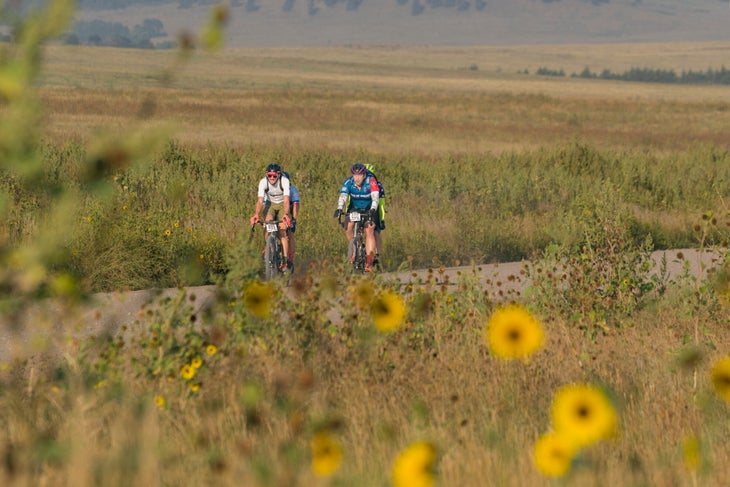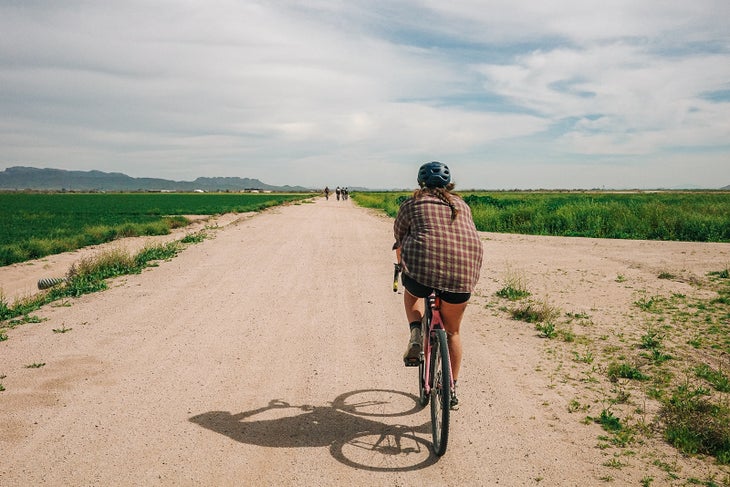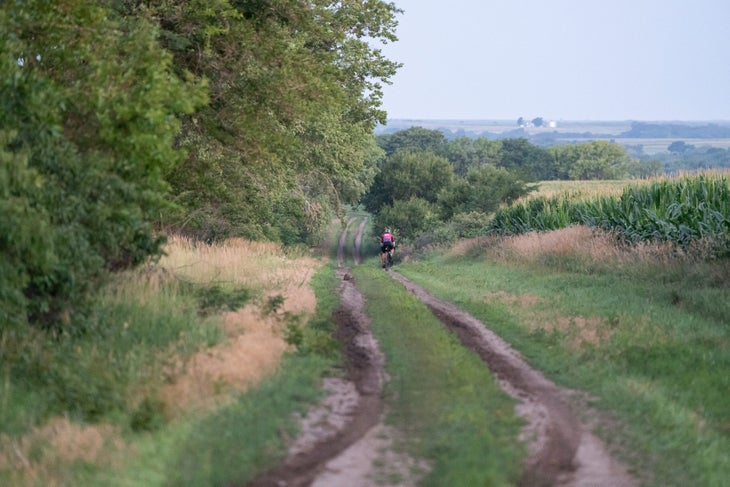Ambitious bikepackers, fastest known time (FKT) hunters, and weekend warriors alike will all have something to look forward to in early 2025.
That’s when the Great Plains Gravel Route (GPGR) is set to launch, bringing a new cycling through-route to the middle of the United States.
The GPGR is an ambitious project that’s finally near fruition after over a decade in the making. It spans approximately 3,800 miles from Texas to North Dakota, traversing six states: Texas, Oklahoma, Kansas, Nebraska, South Dakota, and North Dakota.
In the spirit of well-established bike touring routes like the Great Divide Mountain Bike Route and the Oregon Outback, the GPGR is meant to be interpreted however a cyclist may choose. Riders can tackle the route all in one go or take it bit by bit.
Each state’s portion of the route is meant to stand alone, yet the segments are knitted together by a common goal: to showcase the diverse landscapes and rich cultural heritage of the Great Plains.
Origins and Development
The concept for the GPGR emerged over a decade ago through conversation between longtime gravel race promoters LeLan Dains and Bobby Wintle.
According to Dains, one of the founders of Unbound Gravel, he and Wintle — who went on to start The Mid South — were chatting about the concept of a “great plains version of the Tour Divide [bikepacking route].”
The idea, Dains said, was to highlight the often-overlooked great cycling right in the middle of the country.
“I would argue that many of us here feel forgotten,” Dains said. “We’re called flyover states. This is about creating an opportunity that uses gravel cycling as a mode to attract people to these areas. To know the people and communities and land that is really special.”
Dains and Wintle, who live in Kansas and Oklahoma respectively, then brought Corey Godfrey of Nebraska into the conversation. Godfrey founded Gravel Worlds in 2010 and had also done the Tour Divide bikepacking race.

Although the three had ridden and researched enough in their own states to begin laying down the groundwork for the route, the concept stalled until just a few years ago.
Dains decided to revisit the idea after working as the director of Kansas tourism office Visit Emporia for a few years. He had seen how gravel cycling — and thus a route like the GPGR — was a viable tourism driver.
“So it felt like the right time to revisit the conversation,” he said.
Wintle and Godfrey were all still keen, and the three roped in experts from the remaining states — Texas and the Dakotas — to fill out the GPGR team.
For Texas, they enlisted Dr. Jerod Foster, an avid cyclist, route creator, and professor at Texas Tech University. At this point, Foster has ridden more of the route than anyone.
The Route: More Than a Straight Line
“Each state’s section was handed off like a relay baton,” said Godfrey, who designed the Nebraska portion. “For Nebraska, I had to work within specific constraints, like avoiding areas that were too sandy or too far from services. But I also had to pick it up in the south where LeLan left off in Kansas and then get to the northwestern corner of the state so the South Dakota section could go through the Black Hills.”
The result? The Nebraska section of the route is about 800 miles, second only in length to Texas.

From the rugged Big Bend region of Texas to the rolling Flint Hills of Kansas, and from Nebraska’s prairies to the iconic Black Hills of South Dakota, each segment reflects the personality of its designer and the region they know best.
Designing the route wasn’t just about choosing scenic roads, though. The team paid close attention to logistics, ensuring riders would encounter opportunities for rest and resupply roughly every 50 to 100 miles. This was especially critical given the scarcity of public lands in the Great Plains, which stand in contrast to the abundant federal lands along routes like the Great Divide Mountain Bike Route.
“We leaned heavily on local knowledge to identify public fishing lakes, parks, and other safe havens,” Dains said. “These will serve as key spots for camping and recharging, especially in more remote stretches like southern Texas.”
Larger communities like Stillwater, Oklahoma, and Lincoln, Nebraska will offer more traditional amenities, making them natural hubs along the journey.
How to Ride: A Choose-Your-Own-Adventure Approach
The GPGR isn’t designed to be a race — at least not yet. Instead, its creators hope that riders see it as a blank canvas, inviting them to interpret and tackle the route in their own way.
“We’re all event organizers at heart,” Dains said, referencing the team’s collective experience with races like Unbound Gravel, The Mid South, and Gravel Worlds. “But this time, we didn’t want to dictate how people use the route. It’s meant to be a space for the community to define.”
Each state is meant to stand alone as a segment, and Dains thinks many people will approach the GPGR much like they would the Appalachian Trail: tackling it state by state rather than in a single, continuous journey.
While there will undoubtedly be those chasing an FKT on the entire 3,800-mile stretch and perhaps an official grand depart one day, the route doesn’t beg for one particular use over another.
View this post on Instagram
However, it was important to the team that information about the route live in one centralized hub. Late this year, they partnered with Bikepacking Roots, a nonprofit dedicated to fostering bikepacking experiences. The GPGR will live in Bikepacking Roots’ catalogue of routes; Dains’ Flint Hills Traverse — the Kansas segment of the GPGR — is already live on the site.
This partnership ensures the route remains up-to-date, with each state having a designated point of contact to address any issues.
Why Now?
The GPGR isn’t just a passion project that finally went live — it’s a product of timing. Advances in bike technology, digital mapping tools, and the explosion of gravel cycling have created the perfect storm for a project like this to take off.
“We have finally have the tools,” said Bobby Wintle of Oklahoma. “It’s been coming but the technology is there. We’ve known it, and now we can put it all together, like ‘wow, no one knows about these roads, these places to camp, these things to see.’ It doesn’t have to be a secret.”
In many ways, the secret has already been out. For the last decade, gravel races like the Mid South, Unbound Gravel, and Gravel Worlds have proved that the backroads of America’s heartland are not just rideable but ripe for adventure, as well.

The creators of the GPGR hope that people who’ve experienced Great Plains cycling at gravel races come back to ride at their own pace. They also hope that people who prefer a multi-day tour over a one-day race will finally have a reason to visit.
Call the Great Plains fly-over country, Wintle said, “but it’s not ‘ride past’ country.”
“If you truly want to know what the US of A is made of, this route will show you that. This route will fully embrace you. We’ve all figured out over the past 20 years just how special the places we live are to ride.”
“
